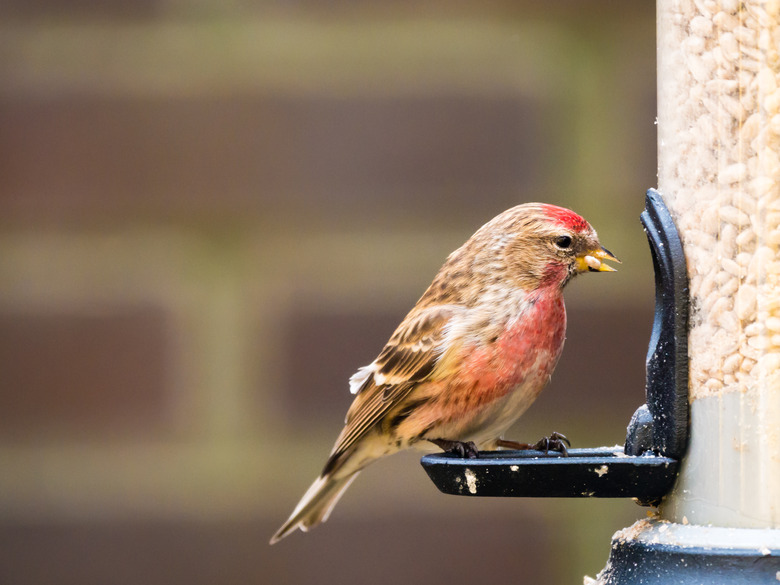How Much Seed Do Birds Eat In A Day?
There are over 9,300 bird species worldwide, with South America claiming the most at around 2,500. North America has around 900 bird species. Birds eat different amounts and types of food depending on species, size and season.
General Consumption Guidelines
General Consumption Guidelines
On average, birds eat approximately 1/2 to 1/4 of their body weight every day. For example, a 2 lb. cardinal, a seed-eating bird, would consume approximately 1/2 to 1 lb. of seeds per day.
Identifying Seed Eaters
Identifying Seed Eaters
Different species eat different foods, and some rarely consume seeds. Seed-eating birds are fairly easy to identify, however, by their thick, cone-shaped beaks or bills, which are good for cracking their food. Examples of seed-eating birds include grosbeaks, sparrows, towhees, finches and several varieties of song birds. To calculate how much seed to place in a feeder, estimate the total weight of the seed-eating birds that frequent the yard and divide by two. Reduce the amount if not all the food is consumed.
Seasonal Variation
Seasonal Variation
While precisely how much seed is eaten varies by species, birds eat more in the winter than in the summer due to metabolic needs. For example, a sparrow can only survive 15 hours without food in 5 degree Fahrenheit conditions, but three days in warm summer conditions.
References
Cite This Article
MLA
Jennings, Elizabeth. "How Much Seed Do Birds Eat In A Day?" sciencing.com, https://www.sciencing.com/much-do-birds-eat-day-7435152/. 15 November 2019.
APA
Jennings, Elizabeth. (2019, November 15). How Much Seed Do Birds Eat In A Day?. sciencing.com. Retrieved from https://www.sciencing.com/much-do-birds-eat-day-7435152/
Chicago
Jennings, Elizabeth. How Much Seed Do Birds Eat In A Day? last modified March 24, 2022. https://www.sciencing.com/much-do-birds-eat-day-7435152/
